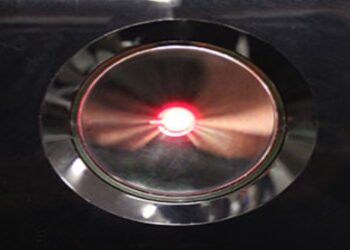Nature vs. Nurture in Pokémon: Or, Why Your Charizard Might Be a Timid Wallflower
Does your Pokémon seem underwhelming? Is your Charizard more of a burnt lizard than a fierce dragon? You may ignore an important factor: Nature. Pokémon Natures are personality traits that affect your monster’s stats significantly.
Lonely? Maybe for a reason… (and it’s not a good one)
Let’s explore the undesirable Natures. Specifically, Lonely Nature. It sounds poetic at first. In reality, it’s as useful as a Magikarp in a beauty contest. Lonely boosts Attack at the expense of Defense by 10%. Ouch.
Imagine this: Lonely transforms your Pokémon into a glass cannon. It hits hard but falls easily. Sure, it might be okay for “frail mixed sweepers like Lucario or Infernape.” This is a very niche scenario, likely from an early morning strategy session. But overall? A bad nature.
Why such negativity? In battles, durability is key. Being able to withstand hits matters as much as dealing damage. A lowered Defense usually spells trouble. You need resilience, not a one-hit wonder with a tragic backstory that rivals the saddest Pokémon tales.
Charizard: Nature’s Choice, Not Mother Nature’s
Let’s focus on a key Pokémon: Charizard. This iconic creature deserves better than Lonely Nature. What’s ideal for this majestic beast?
The Usual Suspects: Modest and Timid
For standard Charizard, two premier Nature choices exist:
- Modest: This Nature enhances Special Attack (like that fiery breath) but reduces Attack. If raw special power is what you seek, Modest is the choice.
- Timid: This nature focuses on speed. Timid boosts Speed, making Charizard quicker than a caffeinated Pikachu, while lowering Attack. Speed lets you strike first, aiding your chances of winning.
These two choices maximize Charizard’s offensive abilities, focusing on power or speed.
Beyond the Meta: Mild and Hasty
Feeling adventurous? Try Mild and Hasty Natures. While loopier choices, they hold potential. Mild enhances Special Attack at the cost of Defense while Hasty boosts Speed at the same Defense loss. These lean risky, veering towards glass cannon traits but can succeed with care.
Mega Evolution Mania: X Marks the Spot, Y Flies High
Mega Evolution changes the game. Charizard has two Mega forms, each needing different Natures:
- Mega Charizard X: This dragon form leans toward physical attacks. Consider Adamant (+Attack, -Special Attack) or Jolly (+Speed, -Special Attack). Adamant maximizes damage while Jolly prioritizes speed.
- Mega Charizard Y: This form excels in special attacks. Stick with Modest or Timid, similar to regular Charizard, emphasizing Special Attack or Speed.
Let’s Go! Natures in Kanto
In Pokémon: Let’s Go, Pikachu! and Let’s Go, Eevee!, Mega Evolution operates differently. No item locks you into a form now. This flexibility makes Timid even better since it supports both Mega forms without limiting attacks. Versatility rules!
Natures to Avoid: Docile and Hardy (and Lonely, let’s be honest)
Just like some fashion trends should vanish, certain Natures should be avoided. Docile and Hardy are neutral and offer no advantages. While neutrality seems fair, in competitions, it’s bland. Why be average when you can optimize? Let’s skip Lonely unless you have a very niche plan.
Dragonite and Turtwig: Nature Exceptions?
The briefing includes unusual claims. It states “Lonely is best for Dragonite” and “Turtwig can handle Lonely.” These claims are questionable. Dragonite requires better Natures for offense or speed without compromising defenses. Turtwig deserves a stronger defense boost to thrive.
Charizard’s Type Chart Tango
Understanding Charizard’s type matchups matters, irrespective of its Nature. As Fire/Flying, it has strengths and weaknesses.
Weaknesses: The Kryptonite Trio
- Rock: Rock-type attacks destroy Charizard. Flying-type vulnerabilities make them 4x more effective. Be cautious battling Rock-types.
- Electric: Electric attacks also target Flying weaknesses. Thunderbolt? Prepare for pain!
- Water: Water-type moves excel against Fire-types, adding vulnerability for Charizard. Surf’s up for them—Surf’s down for Charizard.
Resistances: Burning Bright Against the Rest
On another note, Charizard possesses several resistances:
Bug, Fairy, Grass, Fighting, Fire, Ground, and Steel cover many types well. It resists Fire (making it decent against other Fire-types) but note it isn’t immune to Ground-type attacks.
Ground-Type Immunity? False Alarm!
A common misconception exists: Charizard is NOT immune to Ground-type attacks. Critical to know. While Flying-types generally hold this immunity, Charizard’s Fire/Flying nature does not apply the same way. Vulnerable to Rock attacks means Earthquake still threatens Charizard.
Charizard’s Arsenal: Abilities and Moves
Pushing past Natures and types, Abilities and Moves help define Charizard’s skills.
Abilities: Blaze and Solar Power
- Blaze: This is Charizard’s base Ability. In a pinch (HP below 1/3), it strengthens Fire-type moves. Reliable but situational.
- Solar Power (Hidden Ability): A niche but strong Ability for sun teams. It boosts Special Attack during sunny weather but reduces HP each turn. High risk brings high reward.
Moves: Fire, Wings, and Claws in Pokémon GO
If you enter Pokémon GO, optimal moves await Charizard:
- Fast Move: Wing Attack
- Charged Moves: Blast Burn and Dragon Claw
This setup maximizes Charizard’s damage potential and type coverage in battles.
In conclusion, understanding Charizard’s Natures, strengths, and weaknesses is crucial. Forget Lonely Nature unless writing a tragedy. Embrace Modest or Timid for regular Charizard; choose Adamant or Jolly for Mega Charizard X. Remember: even fire-breathing dragons have their Rock-type Achilles’ heel. Train your Charizard to be the best!










